William Blake
William Blake was born in London in 1757. He was the son of a haberdasher, and later,
an important painter and a poet. He was religious and a poor guy because he didn’t enjoy the success of his works while he was alive, they succeeded when he died. He survived because of a small group of people who believed in his art and bought him some of his prints or paintings. One of these people was his friend Thomas Butts. He married Catherine Boucher in 1782. In 1784 he started a business of engraving and then he worked for others right after his brother Robert died. Blake was friend of Mary Shelley, Percy B. Shelleyand, and Thomas Paine. So he was always surrounded by an intellectual and a thinking little world. Between them, he was known by being insane and mentally unhealthy. But let’s better say his mind was very imaginative and creative. When he was young, he said that he saw strange things, such as God and angels in a tree. He said he talked with his dead brother Robert. And now, It is rumored that on the same day he died, he sang with happiness because of the things he saw in heaven. Blake and his fathers took advantage of this strange form of creativity and they support him in his studies for becoming an artist.
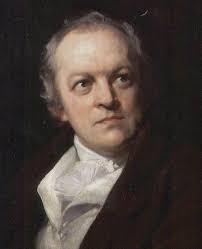
William Blake
Influences
James Bazire was an influence for Blake ,they work together in 1771. Also, he learned a lot from the sculptor John Flaxman and the Swiss painter H. Fuseli (Füssli).He copied some things from the Gothic style. He read Shakespeare, Milton, The Bible and Ossian.
Blake studied the worls of Michelangelo, Dürer, Raphael, Heemskerk, etc. Michelangelo was an influence for the illustrations of his writings. The greek and roman mythology was also an influence in his poems.
But he wasn’t only influenced by others, but also was an influence for future poets, artists, writers and musicians.
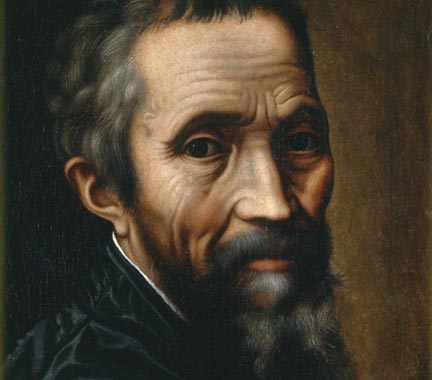
His works
In 1789 he published "Songs of Innocence", ilustrated by himself. 5 years after that, he published "Songs of experience". He made "Inventions on the Book of Job", his masterpiece, for John Linnell (painter),and also some ilustrations for " The Divine Comedy". Later , "Milton the poem" and "Jerusalem", two poems written and ilustrated by him, rejecting any conventional religion. Blake did changes on the metrics and the classic english rythms.
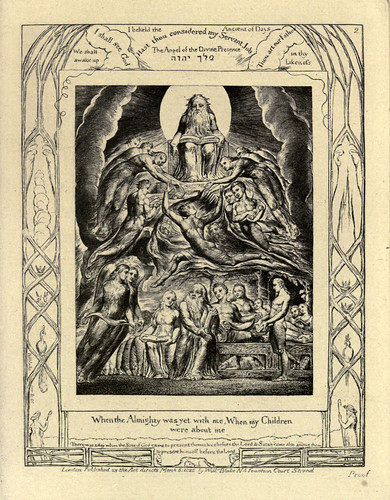
Illustration of the book of job
Topics of his works
Blake has works of different genres , he always used two sides for everything: goodness and evilness, heaven and hell, abstract and concrete , external world and inner world, etc. He also used his ideologies for his topics; he was a champion of human rights , and he was against racism, sexual discrimination and neoclasicism , for that reason he gave up his studies at the Royal Academy.
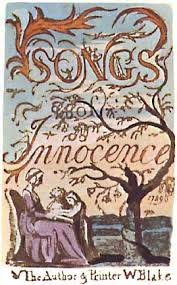
"Songs of Innocence", one of their works mentioned above, is a poetry collection that it seems to be written by a child , in natural locations. Inside this collection it can be found these poems: “Little Boy Lost”, “Little Boy Found” and “The Lamb”. These ones and the other poems in it, are a response from another ones in “Innocence” so its like a continuation, because that ‘child’ grows and learns about situations that life gives…
Blake died in 1827 in Fountains Court (off The Strand).
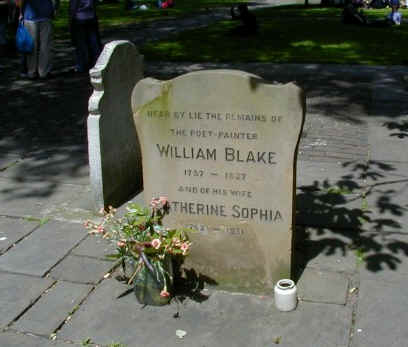
"If the doors of perception were cleansed every thing would appear to man as it is, infinite. For man has closed himself up, till he sees all things thro’ narrow chinks of his cavern."—from The Marriage of Heaven and Hell written between 1790-93.
Here's a poem from Songs of Innocence:
Tyger! Tyger! burning bright
In the forests of the night,
What immortal hand or eye
Could frame thy fearful symmetry?
In what distant deeps or skies
Burnt the fire of thine eyes?
On what wings dare he aspire?
What the hand dare sieze the fire?
And what shoulder, & what art.
Could twist the sinews of thy heart?
And when thy heart began to beat,
What dread hand? & what dread feet?
What the hammer? what the chain?
In what furnace was thy brain?
What the anvil? what dread grasp
Dare its deadly terrors clasp?
When the stars threw down their spears,
And watered heaven with their tears,
Did he smile his work to see?
Did he who made the Lamb make thee?
Tyger! Tyger! burning bright
In the forests of the night,
What immortal hand or eye
Dare frame thy fearful symmetry?
Comments (0)
You don't have permission to comment on this page.